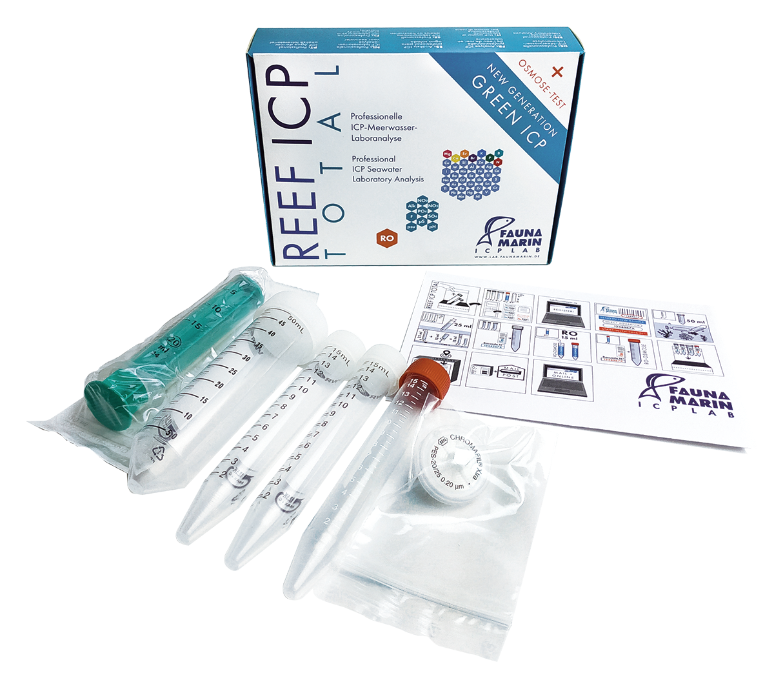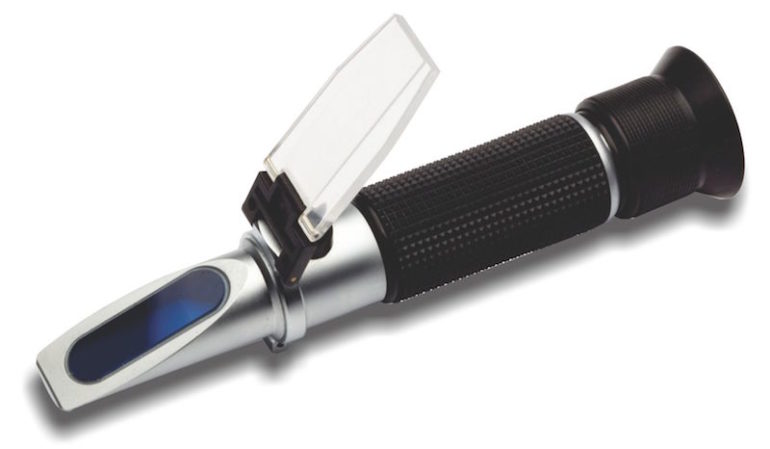We wouldn’t run a reef tank without these!
RO Unit
Filling up and maturing your tank with tap water is fine, but for topping up you need a pure source of water that will replace evaporation without making any levels build up. Get an RO unit with an additional deionizing pod and you’ll have pure water to make up saltwater for future changes and for topping up. RO units can be installed inside or outside and anywhere where there is a mains tap water feed and a drain. Buy one for home and you can make as little or as much as you want and you don’t have to drag water back from your LFS. Check the unit’s product water with a TDS meter.
Refractometer
Our reefing lives became instantly richer with the introduction of refractometers. Salinity is so important because parameters like Calcium and Potassium are affected by the saltiness of the mix. Swing arm hydrometers aren’t accurate enough and although floating models can be very accurate, they aren’t quick and easy to use but are easy to break. When we are diagnosing reef tank problems the first thing we reach for is the refractometer.
Auto top-off
Maintaining salinity is crucial for a reef tank and all tanks, large or small, should have a top-up fitted. It can work via a sensor or a float valve and as long as you keep the reservoir topped up it will be one less thing to worry about.
Protein skimmer
Although not absolutely essential, the vast majority of successful reef tanks employ protein skimmers for the role they play in nutrient export. Remove organics with a protein skimmer before the nitrogen cycle converts it for a nutrient poor environment akin to a pristine coral reef.
Phosphate remover
Remove phosphate and you’ll remove a key nutrient for nuisance algae growth. Phosphate is often introduced via the juice in frozen foods and although it’s not good to have it bottom out at absolute zero, aim for a level of 0.04ppm with a mixed reef. Nitrate can be allowed to rise surprisingly high without problems, but bust phosphate first using resins or probiotics. Phosphate resin in a fluidized reactor is even better.
Blade scraper
Hard coralline algae thrive in our alkaline reef environments and a sponge just isn’t enough. Arm yourself with a long reach scraper with a blade, and carefully slide it over the tank glass at least once a week. Scrape the back of the tank and the weir box to complete the modern, clean look.
Roller filter
Roller or fleece filters are the dishwashers of the reef tank world, doing the dirty manual work so you don’t have to. A dirty filter sock is actually worse than no mechanical filtration at all because the flow of water turns that trapped waste in a nutrient reactor, releasing it back into the aquarium in liquid form. Remove the socks, get a roller filter, set, and forget it. At least until the roll needs changing in a few months’ time.
Test kits
Don’t rely on your LFS to test your water for you as you need to know what your levels are at any one time and how they quickly they rise or fall. You’ll need one for Alkalinity, Calcium, Magnesium, nitrate, and phosphate. Get a copper test kit for quarantining fish and if you want better accuracy at home, opt for a device like a Hanna Meter.
Dosing unit
Once you know how quickly your alkalinity drops on a daily basis you can set up an auto doser to administer KH buffer for you, and after that, you may as well buffer Calcium, Magnesium, and trace elements too. Whether it’s one two, three, or more parts you dose every day, get a nice accurate stepper motor to dose each one automatically and one of the most important factors, parameter stability, will be maintained for you 24 hours per day.
ICP test
If you’re having problems with corals and you can’t put your finger on just what it is via normal testing then carry out an ICP test. Test your RO product water and your tank’s saltwater to provide accurate analysis on everything from Arsenic to Zinc, and every ICP we carry out, we find enlightening and we try to fix it for the next time.




